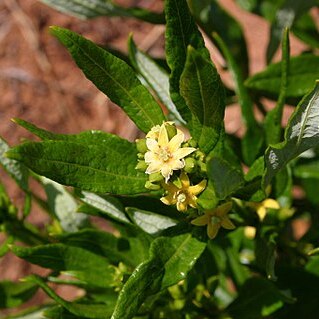Corolla tube usually cylindrical, glabrous or hairy outside, with a ring of deflexed hairs inside, pubescent to densely hairy above it and densely hairy or less often glabrous at the throat; lobes 5(8), acute to apiculate at the apex, papillate on inner surface.
Leaves usually in whorls of 3–5(6), or paired, mostly subsessile or shortly petiolate; stipules small, often persistent, connate into a sheath, hairy inside at the base and produced into a subulate appendage at the apex.
Style slender or rather thick, usually thicker towards the base, not or scarcely exceeding the anthers; pollen presenter coroniform or rarely cylindrical, sulcate, 3–5(8)-lobed.
Inflorescences of axillary few-flowered cymes, usually shortly pedunculate, or in some species flowers solitary; flowers usually rather small; buds obtuse or shortly apiculate.
Glabrous or hairy suffrutescent subshrubs, usually with several often annual stems from a woody rootstock; rarely shrubs or small trees.
Calyx tube campanulate or subglobose, the limb truncate, or 5–10-toothed or-lobed, the divisions obtuse to subulate.
Fruits small, often bearing the remains of the calyx limb, glabrous, containing 1–3(8) pyrenes.
Ovary 3–4(8)-locular; ovules solitary in each cell, pendulous.
Anthers usually oblong, shortly exserted; filaments short.
Disk usually depressed.

